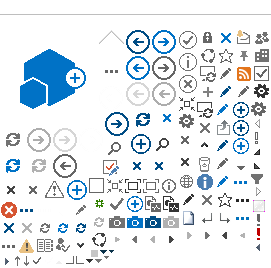Most drivers believe other motorists' driving behaviors are bad and getting worse, according to Nationwide. Yet most rate their own driving very highly, despite participating in the same risky behaviors.
Most drivers believe that roads are becoming increasingly dangerous, rating other motorists' driving behaviors as bad and getting worse, according to Nationwide's annual “Driving Behaviors" survey. Yet among personal drivers and commercial drivers alike, hubris about their own driving habits is leaving room for bad behavior.
Nine out of 10 consumers feel that other motorists are using their phones more often while behind the wheel (92%), driving faster (92%), behaving more aggressively (92%) and driving more recklessly (88%). Additionally, nearly half (47%) of consumers expressed concerns that built-in touchscreens and displays contributed to driver distraction, a 6-point increase from last year's survey.
Only 15% of drivers rate others as "very good" or “excellent" drivers. However, 80% of consumer respondents rated their own driving very highly, despite admitting to participating in the same risky behaviors as other drivers. Another 20% of respondents said they text while driving, 15% use social media, 13% admit to watching videos and 11% are reading or writing emails.
“Far too many people believe they're immune to distraction or that a 'quick check' won't hurt," says Casey Kempton, Nationwide's president of personal lines. “Our latest survey data clearly reveals that these split-second decisions can have serious consequences. Nationwide is committed to driver safety and, no matter the use, a phone in the hand while driving is a dangerous distraction."
Commercial drivers share many of the same hypocritical tendencies, with 89% rating their own driving as “good" or “excellent" but less than 60% believing the same of other drivers. Meanwhile, 75% of commercial drivers believe cell phone usage by other motorists has increased over the past year and 7 in 10 commercial drivers worry about being hurt or killed in an accident or being held liable for the damages.
Yet, 21% of company drivers admit to frequent distractions while driving for work, including adjusting their GPS device, using cell phones for calls, texts and social media, eating or drinking, or adjusting their radio.
As professional drivers grow more anxious about the dangers of the road, 44% say their employers are struggling to hire or retain qualified drivers, a 5-point increase from 2024. The resultant staffing shortage is leading to increased workloads (72%), longer driving hours (71%), difficulty meeting deadlines (57%), decreased training quality (54%), and a reduced focus on safety (49%)—all up significantly from last year.
Forty-one percent of drivers believe staffing shortages have negatively impacted their own driving, a 20-point increase from last year. More than half (53%) of commercial drivers admit they take work phone calls while driving and a quarter say they read or respond to work text messages (28%) or work emails (24%).
Nationwide notes the discrepancy with the only 1 in 5 commercial drivers who confessed to distracted driving, “suggesting that many respondents participate in these risky behaviors but may not actually perceive them as leading to distractions—a significant and dangerous perception gap," according to the report.
“Company drivers are overwhelmed, distracted and in many cases, worried. When nearly half say staffing shortages are affecting their driving, and 70% fear serious consequences from a crash, it's a clear signal that fleet drivers are under stress," said Mark McGhiey, risk management and client services leader at Nationwide.
“While comprehensive fleet safety programs are critical for all employers with drivers, this isn't just about better planning or stricter rules; it's about building a culture of safety that supports drivers through robust training, smarter tools, and a commitment to their wellbeing every time they start the engine," he said.
Technologies like dashcams and telematics are a necessity to improve driver safety. On the commercial side, dashcam usage is now installed in 84% of work vehicles, a 29-point jump year over year, and 2 in 3 drivers say their employers require them. Additionally, 44% of drivers say their companies are enforcing hands-free policies and 71% are using continuous motor vehicle record monitoring.
Dashcams are making their way to personal lines as well. While only 20% of consumers have a dashcam, 85% believe dashcams encourage safer driving practices and 94% believe dashcams provide valuable evidence during accidents. Also, 60% are even comfortable with artificial intelligence (AI)-enabled dashcams that monitor driving behavior.
AnneMarie McPherson Spears is IA news editor.
